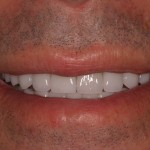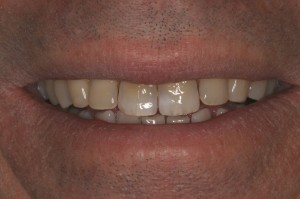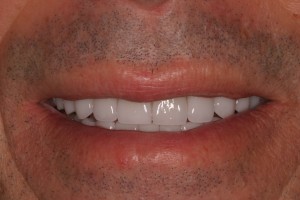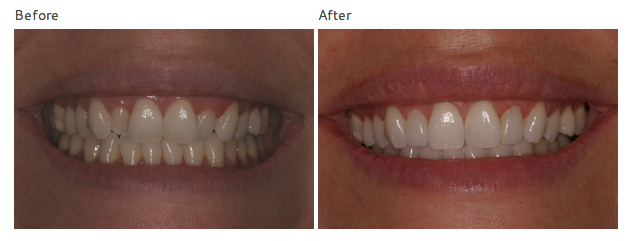 Babies are incredibly cute - especially your own baby. But what happens when your baby’s teeth start coming through and you notice a big gap between their front teeth? You may start to wonder if there’s something wrong with your baby’s mouth, or if you did something wrong. Before you rush your baby to the dentist, read this article. It’s likely that your baby’s gaps are completely normal! In fact, they can actually be a good sign.
Babies are incredibly cute - especially your own baby. But what happens when your baby’s teeth start coming through and you notice a big gap between their front teeth? You may start to wonder if there’s something wrong with your baby’s mouth, or if you did something wrong. Before you rush your baby to the dentist, read this article. It’s likely that your baby’s gaps are completely normal! In fact, they can actually be a good sign.
Why Baby Teeth Are Important
Why worry about your baby’s teeth when they are bound to fall out one day anyway? Baby teeth are actually very important, both for your child’s health right now and their future.
It goes without saying that baby teeth help your child chew food and speak. But a lesser known fact is that baby teeth actually create a path for your child’s adult teeth to grow in by holding a space for them, according to the American Dental Association (ADA). If your baby loses a tooth too early, then a permanent tooth may drift into the area, making less room for adult teeth to come in later. This can lead to a crooked or crowded smile.
What Causes Gaps Between Your Child’s Teeth?
Now that you know how important baby teeth are to your child’s future smile, we’re here to hopefully alleviate your worry It’s very normal for children to have gaps between their baby teeth. In fact, it’s typically a good thing! Many children have gaps between their teeth because of natural development, their teeth are small, or their frenulum. While the first two causes are relatively self-explanatory, let’s explain the third a little more.
Your frenulum is the piece of connective tissue that connects your gum between your two front teeth and upper lip. If you lift up your upper lip, you can probably feel it! This frenulum is thought to help position your baby’s teeth, according to Victoria State Government. When the frenulum is oversized, it can cause a gap between your front teeth. Typically, when your baby turns one, the frenulum will naturally shorten. More teeth will grow in to fill the gaps. If there’s still a gap in your baby’s front teeth, large molars may close it when they grow in.
Other causes of gaps, like small teeth, also typically resolve themselves when your child gets their adult teeth. Large gaps can actually be a good thing because they give your adult teeth more space to grow in. This could mean you don’t have to cough up the money for braces when your child grows up.
When Gaps Between Your Baby’s Front Teeth is a Bad Thing
If your child has excessive gaps in their teeth, which is uncommon, it may be a sign that something is wrong. Gaps in your baby’s teeth can also be caused by extra teeth that prevent other teeth from growing in, missing teeth, a large jaw compared to their teeth size, or an oversized frenulum. These causes may affect your baby’s adult teeth, leading to teeth misalignment or a permanent gap.
Treatments for a Gap Between Your Front Teeth
Like we said earlier, it’s likely that the gap in your baby’s front teeth will close naturally. However, there are some uncommon incidents in which the gap persists into your child’s adult teeth. If you think your child is experiencing a gap between his or her front teeth because of extra teeth, missing teeth, a large jaw, or an oversized frenulum, you should take your child do the dentist.
The ADA recommends visiting the dentist within 6 months after your baby’s first tooth comes in. This visit should help you to identify what’s really at the root of your baby’s front tooth gap.
If your baby’s front tooth gap isn’t normal and won’t naturally fix itself, you have several options. Remember, a tooth gap could just be a cosmetic issue. A tooth gap can affect your child’s self esteem, but it can also be a unique and loved feature in your child’s appearance. Make sure to think long and hard about getting your child’s gap closed if it’s purely cosmetic. Gapped teeth may also cause teeth misalignment. In this case, it will likely be best to fix the problem.
Here are some treatments your dentist may recommend to close a gap between your baby’s front teeth.
- Veneers can be placed on your child’s front teeth to close a small gap between the teeth. These veneers will be slightly wider than your child’s normal teeth to close up the gap.
- Frenectomy is a surgery that can remove the oversized frenulum that is causing a gap between your child’s front teeth. This will typically be done before the teeth are moved with the other treatments.
- Removable treatments, like a plate or Invisalign, can be used to move the teeth closer together.
- Fixed treatments, like braces, can be used with rubber bands and wires to move the teeth closer together.
As you can see, gaps between your child’s front teeth are typically not anything to be worried about. That being said, it’s important to bring your baby to the dentist regularly in case there is a more serious issue behind your baby’s gap. Make sure to bring your baby into the dentist if there are any issues after their first tooth grows in - and not later than their 3rd birthday. The ADA actually even recommends after their 1st birthday. This way, your dentist will be able to closely monitor your child’s baby teeth to see if any issues arise.
There’s no better place to bring your child in for a checkup than Water Tower Dental Care! We’re experts in baby teeth and will make sure to keep you and your child comfortable during your child’s first dentist appointment. Contact us to make an appointment today!
 There’s nothing like a little Chicago crosstown rivalry to get the blood boiling. While we’ll leave the big game analysis up to the professional players, we’re here to compare the teams in a new, but equally important way: by their mascot’s teeth. After all, who wants to follow a team that represents bad dental health?
There’s nothing like a little Chicago crosstown rivalry to get the blood boiling. While we’ll leave the big game analysis up to the professional players, we’re here to compare the teams in a new, but equally important way: by their mascot’s teeth. After all, who wants to follow a team that represents bad dental health?
 Babies are incredibly cute - especially your own baby. But what happens when your baby’s teeth start coming through and you notice a big gap between their front teeth? You may start to wonder if there’s something wrong with your baby’s mouth, or if you did something wrong. Before you rush your baby to the dentist, read this article. It’s likely that your baby’s gaps are completely normal! In fact, they can actually be a good sign.
Babies are incredibly cute - especially your own baby. But what happens when your baby’s teeth start coming through and you notice a big gap between their front teeth? You may start to wonder if there’s something wrong with your baby’s mouth, or if you did something wrong. Before you rush your baby to the dentist, read this article. It’s likely that your baby’s gaps are completely normal! In fact, they can actually be a good sign. Teeth are called pearly whites for a reason. They should be white - not see-through. Along with affecting your appearance, translucent teeth can also signal that something more serious is going on with your teeth. Teeth typically begin to appear translucent when enamel is thinning.
Teeth are called pearly whites for a reason. They should be white - not see-through. Along with affecting your appearance, translucent teeth can also signal that something more serious is going on with your teeth. Teeth typically begin to appear translucent when enamel is thinning. Enamel Remineralization
Enamel Remineralization From putting on caps to placing dental veneers, dentists do a lot of interesting things to keep your teeth in tip-top shape. If you live your daily life outside of the dental world, you might find all of the stuff we do to be a bit confusing. We’re here to break down some of the most popular cosmetic dental treatments we offer at Water Tower Dental Care to help you better understand which procedures can best help your smile. Here’s the difference between caps, crowns, veneers, onlays, inlays and fillings.
From putting on caps to placing dental veneers, dentists do a lot of interesting things to keep your teeth in tip-top shape. If you live your daily life outside of the dental world, you might find all of the stuff we do to be a bit confusing. We’re here to break down some of the most popular cosmetic dental treatments we offer at Water Tower Dental Care to help you better understand which procedures can best help your smile. Here’s the difference between caps, crowns, veneers, onlays, inlays and fillings. A smile says a lot about you. A sparkling and straight grin will tell people that you take the time to take care of yourself and your teeth, and can give you a serious confidence boost. Unfortunately, not all of us have the teeth we wish we had. Genetics and accidents can leave us with chipped, stained or crooked teeth that we’re unhappy with. But there’s a solution. Dental veneers can cover up your dental imperfections in a quick and efficient way for years to come.
A smile says a lot about you. A sparkling and straight grin will tell people that you take the time to take care of yourself and your teeth, and can give you a serious confidence boost. Unfortunately, not all of us have the teeth we wish we had. Genetics and accidents can leave us with chipped, stained or crooked teeth that we’re unhappy with. But there’s a solution. Dental veneers can cover up your dental imperfections in a quick and efficient way for years to come.











 Website Powered by Sesame 24-7™
Website Powered by Sesame 24-7™